-
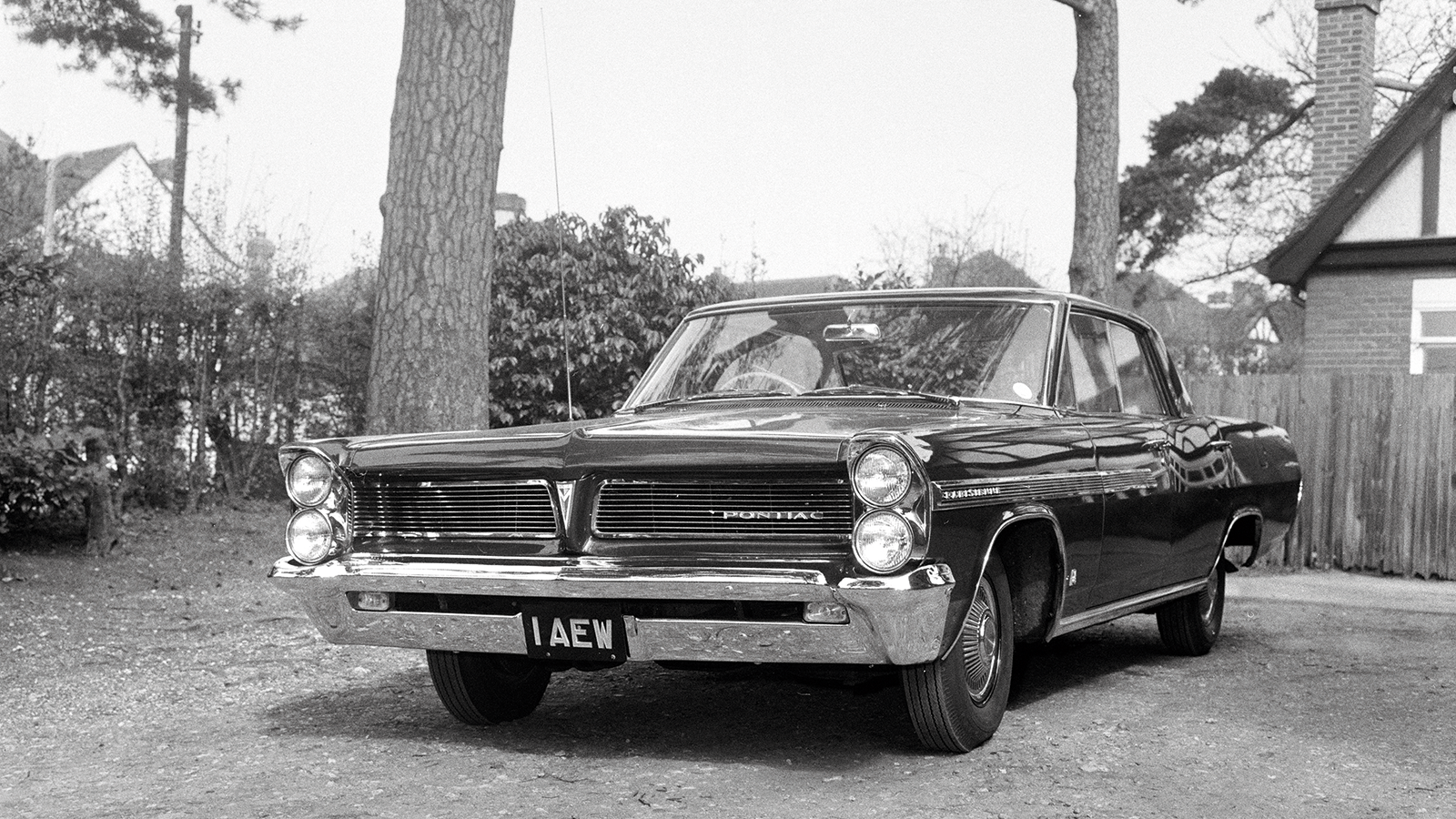 © Getty
© Getty -
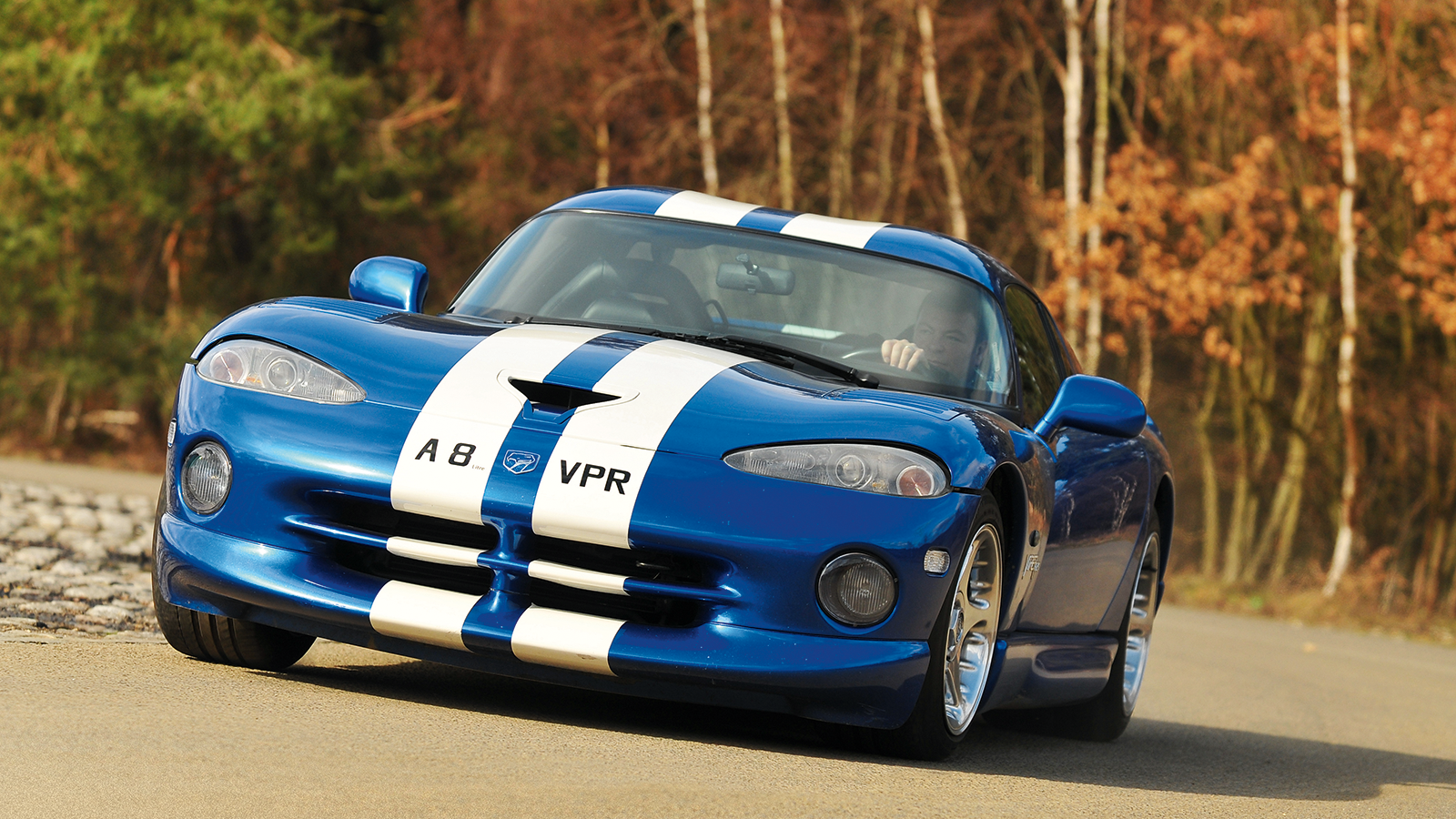 © Haymarket Automotive
© Haymarket Automotive -
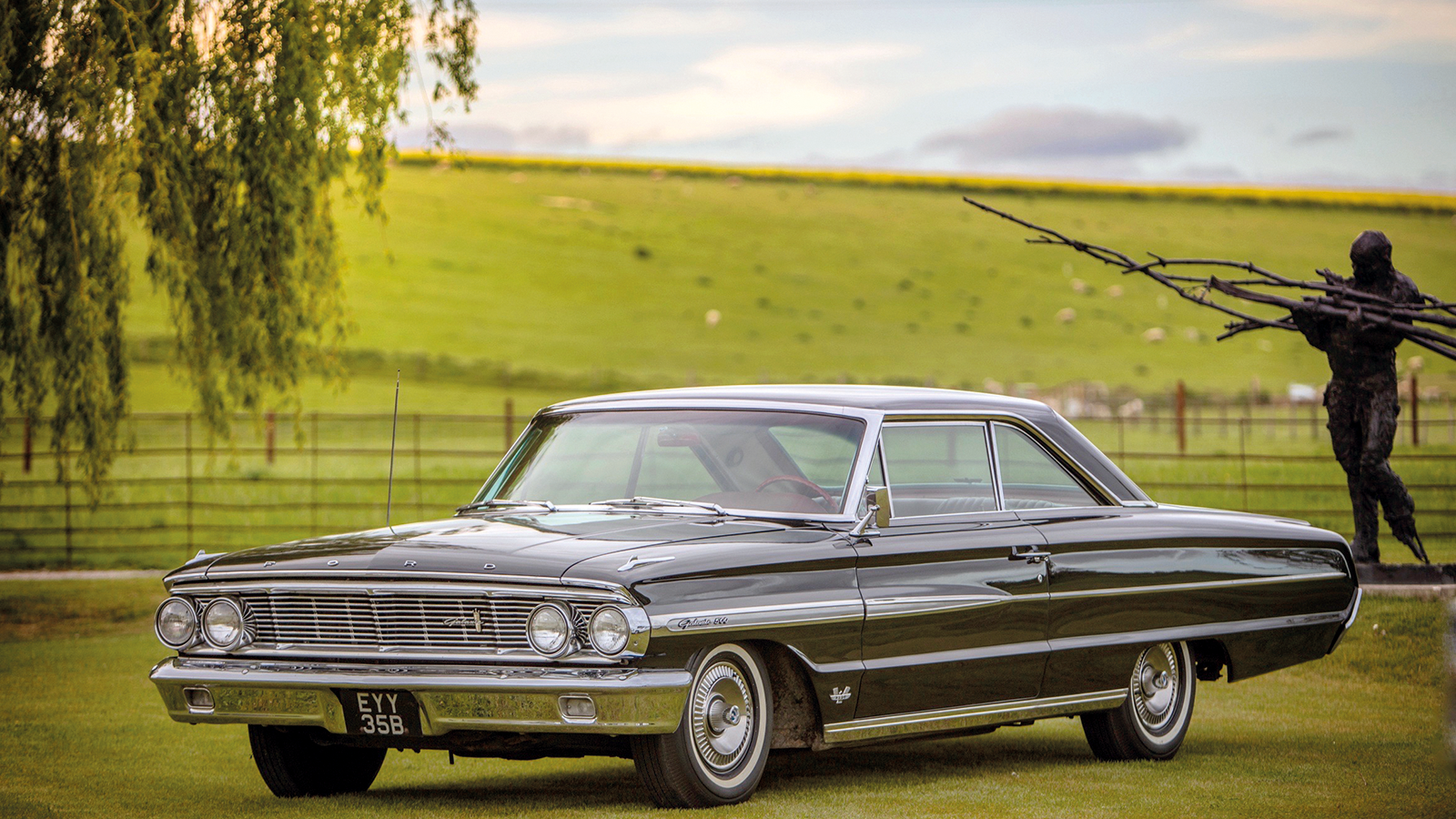 © Classic & Sports Car
© Classic & Sports Car -
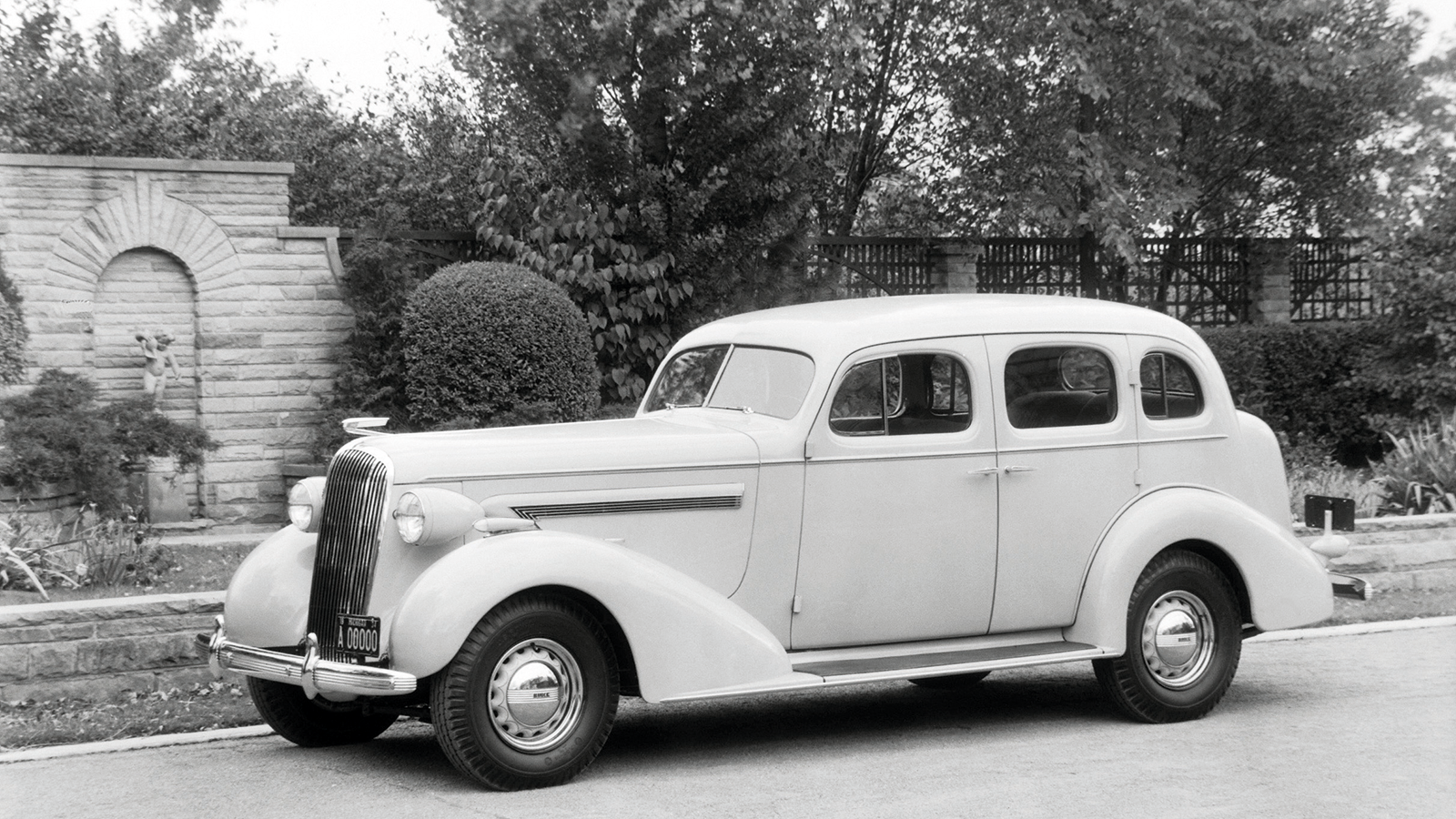 © GM
© GM -
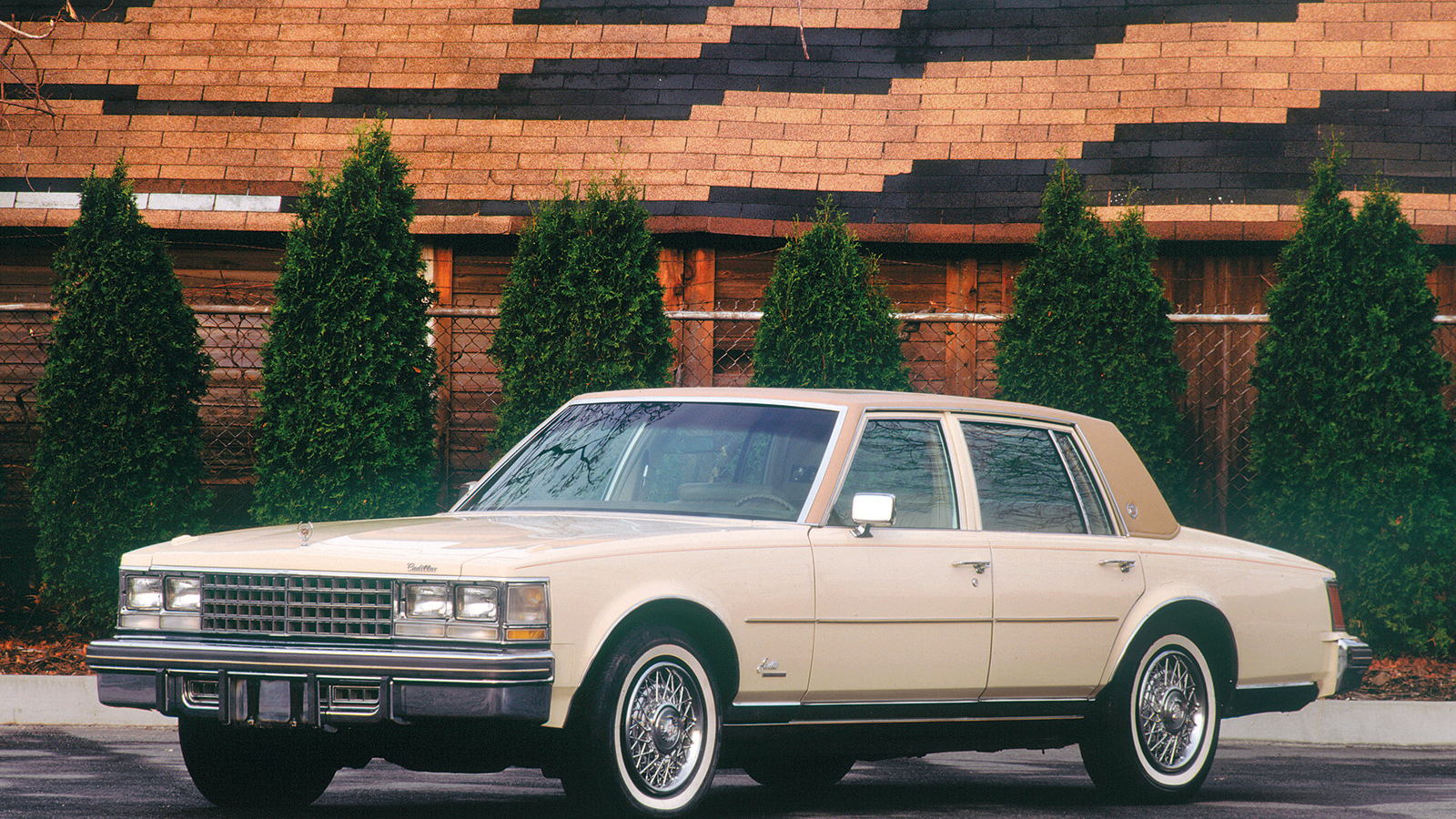 © Getty
© Getty -
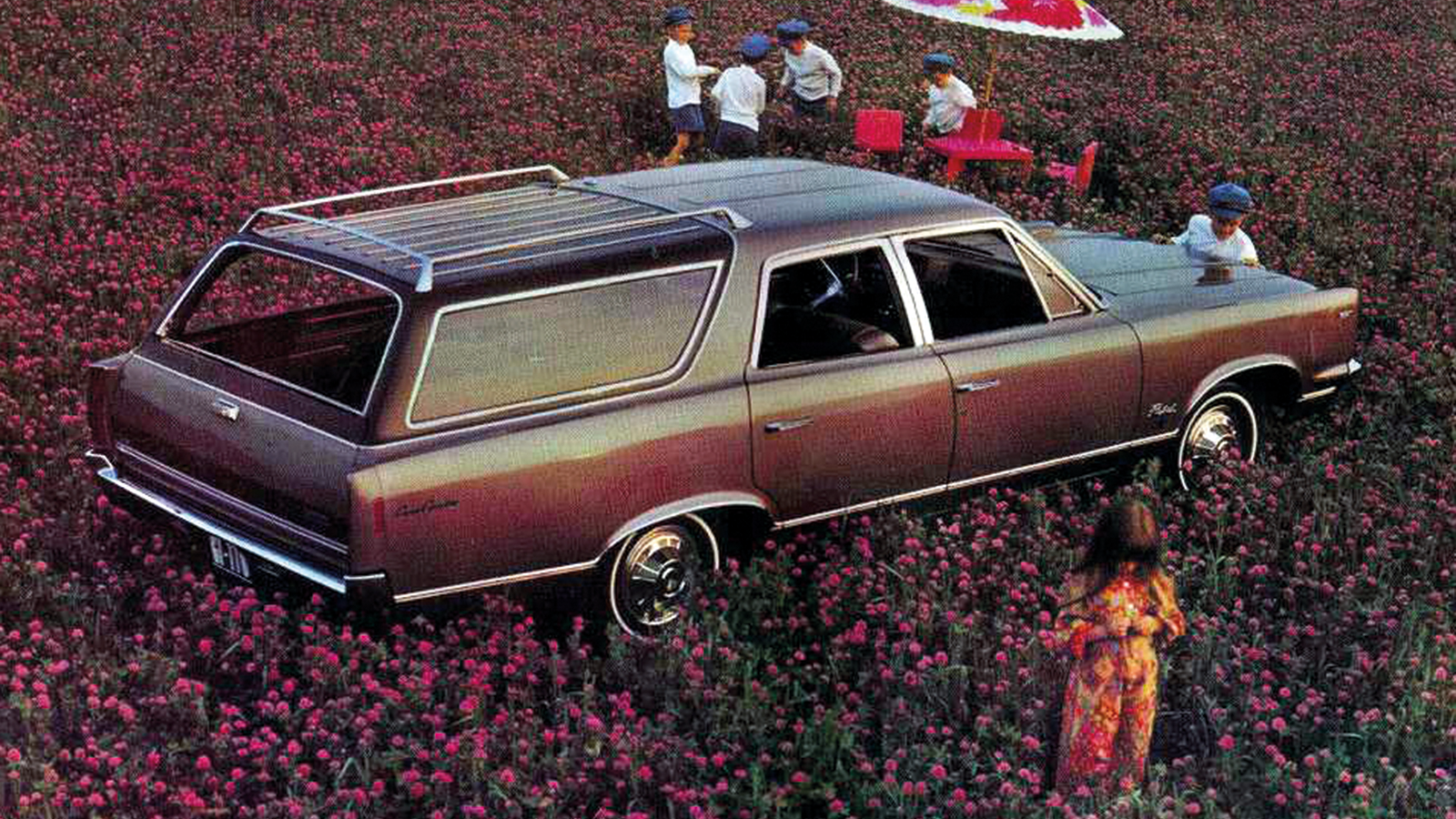 © AMC
© AMC -
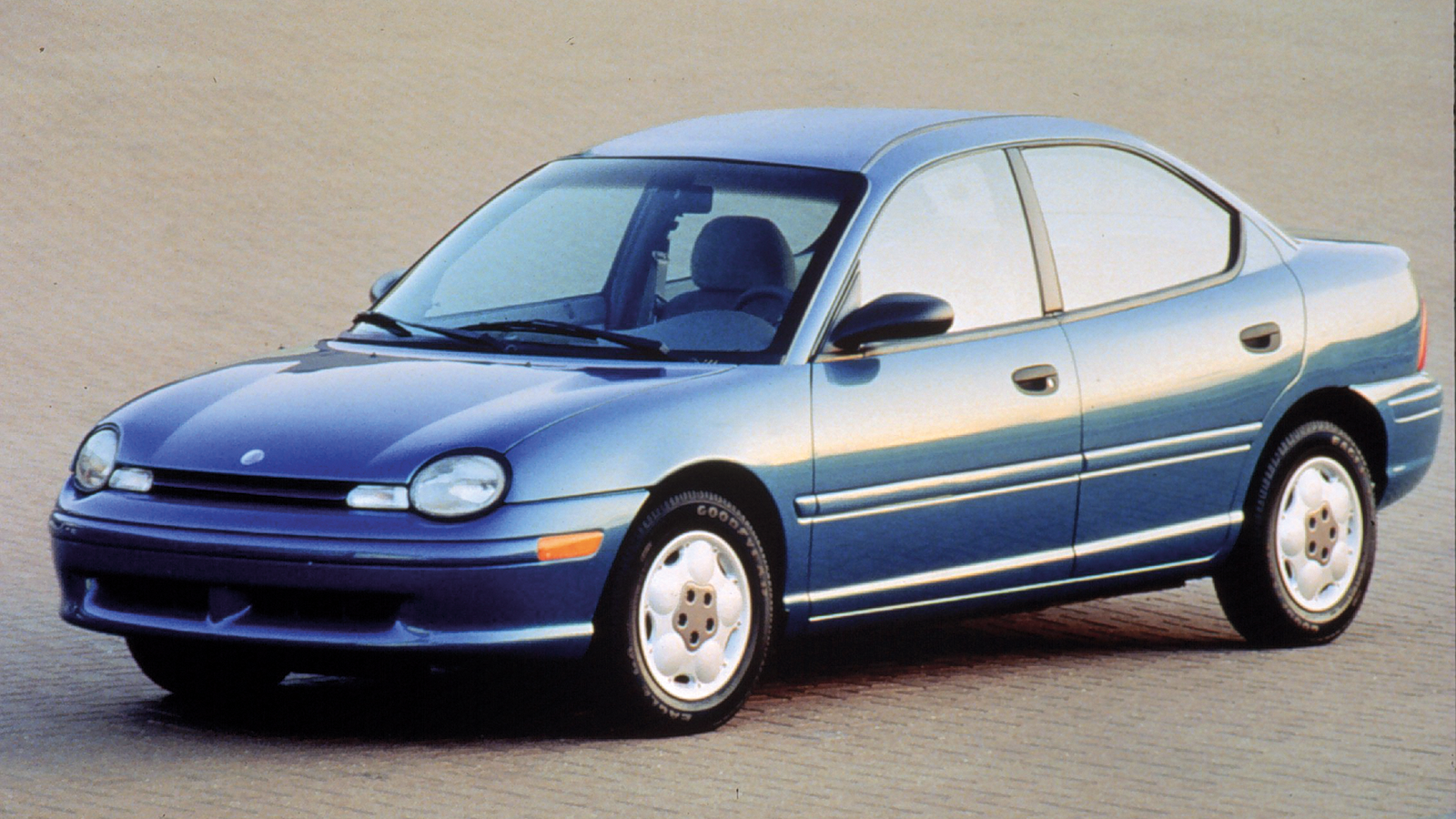 © Chrysler
© Chrysler -
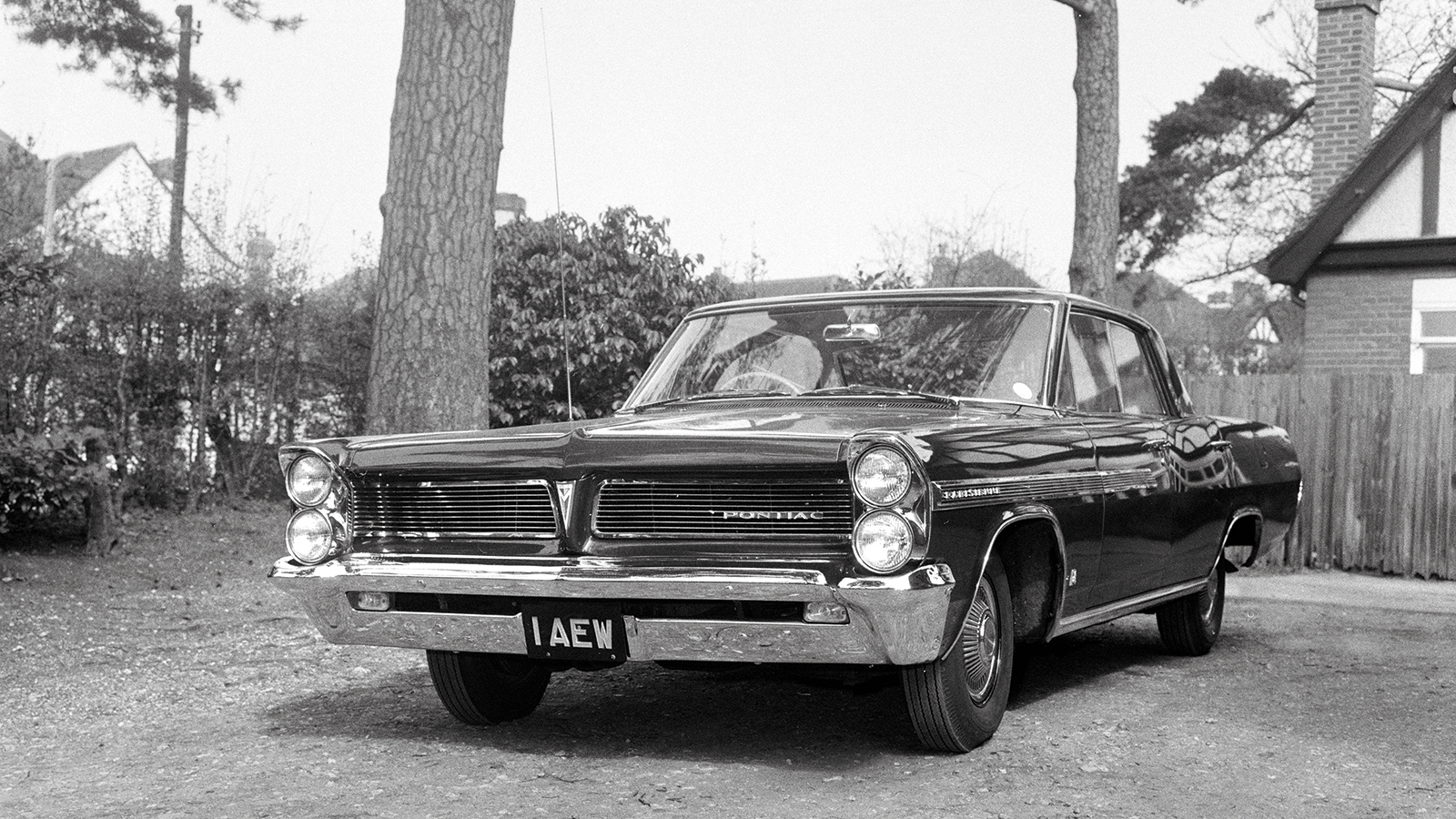 © Getty
© Getty -
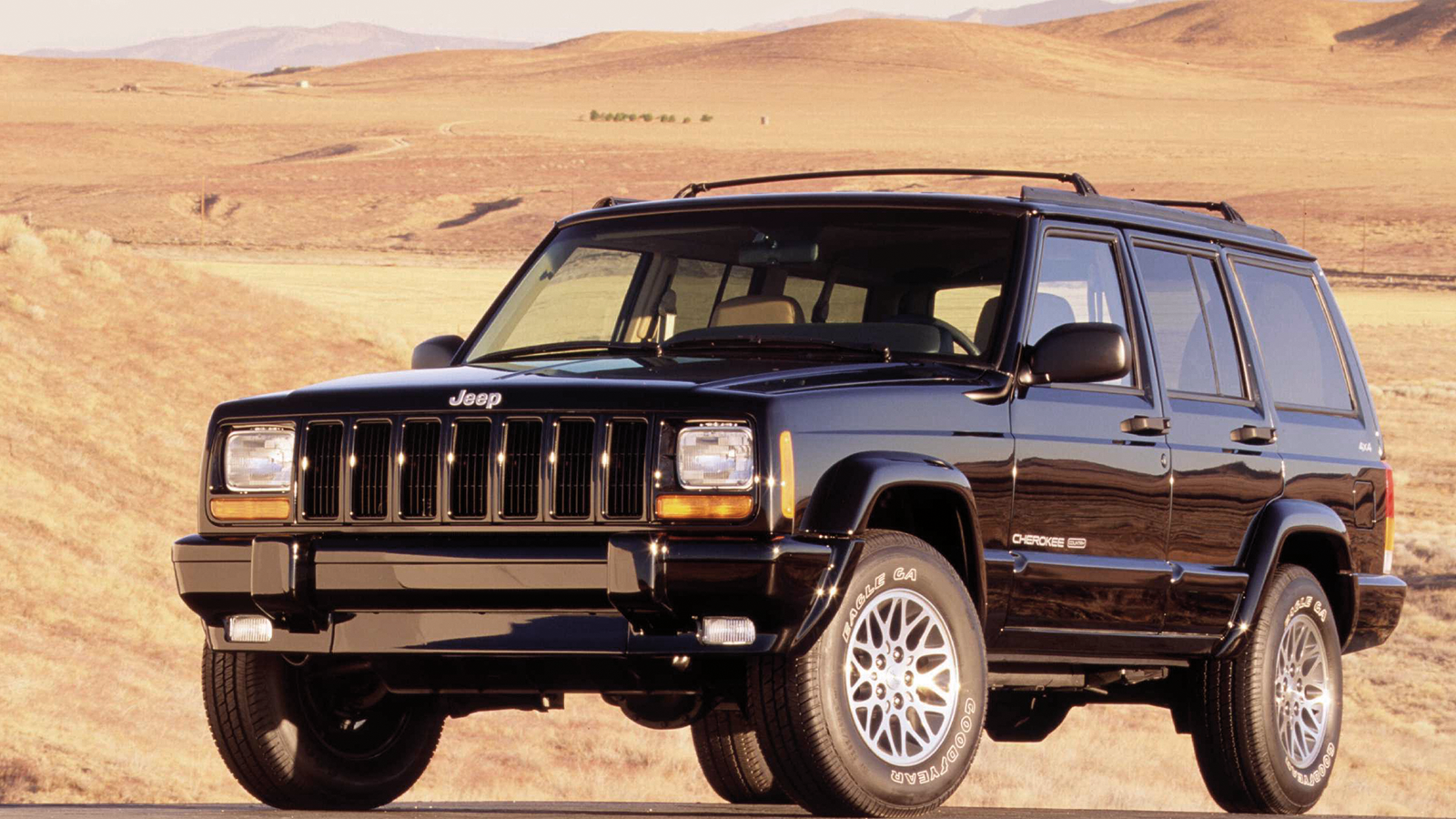 © Chrysler
© Chrysler -
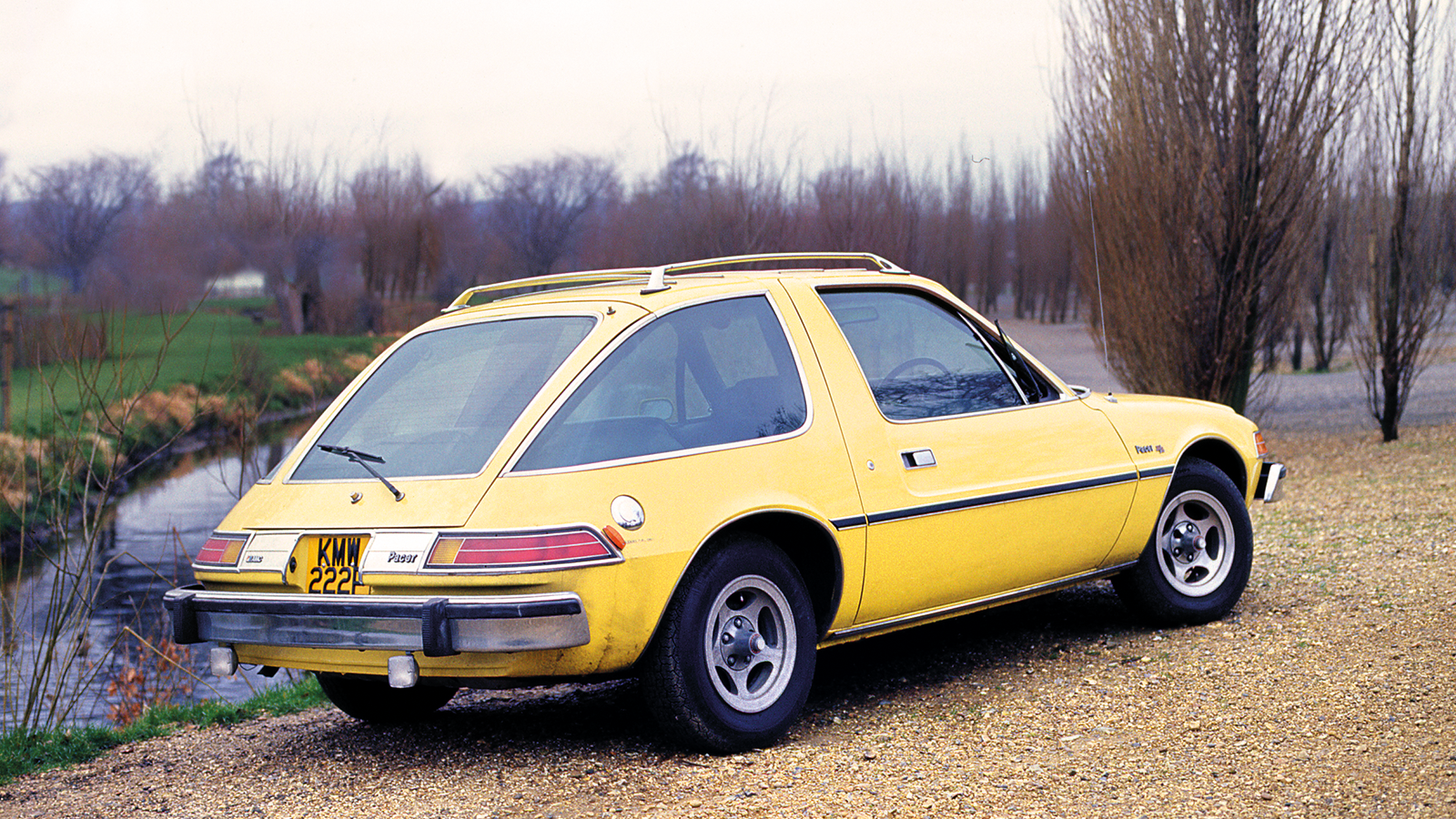 © AMC
© AMC -
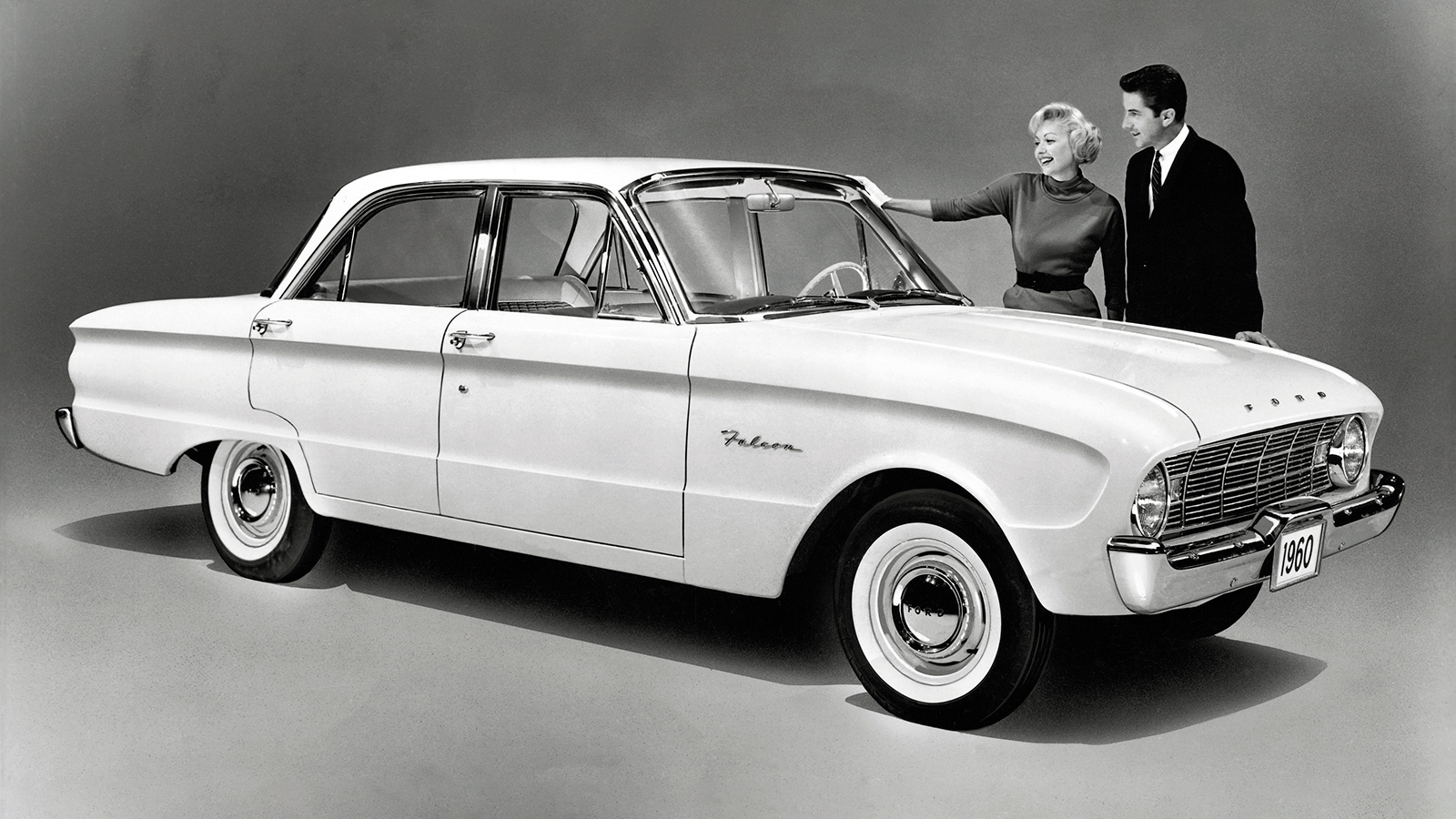 © Getty
© Getty
-
Flying the flag
Seen through objective eyes, the UK’s enduring fascination for American cars is illogical. Sometimes garish, invariably large, these behemoths originally had axle tracks wide enough to fill the actual tracks created by the horse-and-wagon combinations that traversed an evolving nation.
The vast distances between settlements, as well as an abundance of space, meant cars were right-sized for the road infrastructure. And that meant big.
Nevertheless, US manufacturers targeted the UK with their wares from almost the dawn of motoring. Cadillacs and Oldsmobiles were available to British pioneer drivers from the start of the 20th century – and with their steering on the right, before left-hand drive became the norm in the USA after 1910.
Ford and GM each established their first overseas plants in the UK, tapping into Britain’s lucrative market while avoiding a 33.5% import tax imposed by the Exchequer. Hence, Model As and Ts were rolling off Ford’s Trafford Park line from 1911, while GM-built Vauxhalls spilled out of Luton from 1925.
Equally interesting are the repeated attempts by North American giants to sell domestic products on British shores.
More suited to Route 66 than the A66, these 10 cars summarise American makers’ ongoing determination to build bridges with British buyers.
-
1. Chrysler Viper GTS
While GM offered the standard Corvette to British punters (despite the brilliance of the breathed-on-by-Lotus ZR-1, which never reached these shores), Chrysler was set to steal a march in the UK with its fire-breathing 8-litre Viper.
Often maligned for having a truck-derived engine, the truth was somewhat different: Lamborghini, then a sister company, refined the V10 unit including swapping its iron block for one cast from aluminium. Yet Autocar’s Steve Cropley was critical: ‘The car was cumbersome, with really heavy controls. The look of the thing made it extraordinary, but it clearly needed development.’
In 1995 it got just that. With power raised to 450bhp and 90% of the components either changed or upgraded, the GTS finally became the car that the 1989 concept should have grown into.
Its brakes were still wooden by European standards, and its steering too slow and uninspiring to cut it against anything wearing a Prancing Horse, but with 0-60mph in just 4 secs and a 177mph top speed – as well as a soundtrack to die for – the Viper truly was an all-American hero.
Anorak fact The Viper’s engine was, in fact, Chrysler’s humble LA360 V8 with two extra cylinders grafted on
-
2. Ford Galaxie 500
While General Motors had become a motorsport-free zone by the mid-’60s, Ford was actively promoting its products on track, and the spectacle of Jack Sears in the Holman & Moody-prepared ‘R-Code’ Galaxie 500 would have been etched in the minds of any early ’60s race fan.
No surprise, then, that Lincoln Cars – Ford’s official UK importer – decided to introduce a right-hand-drive Galaxie to British roads.
Built in Ford Canada’s plant in Oakville, Ontario, the 500 (named for its success in 500-mile stock-car races) used a 300bhp 6.4-litre V8, which powered the two-door behemoth from 0-50mph in 7.7 secs and on to a – for the time – jaw-dropping 120mph.
You can only imagine what a swathe the ’64 Galaxie would have cut through a typically British parochial street scene, casting aside Morris Minors and Ford Prefects with ease.
But Motor Sport’s Bill Boddy was a fan: ‘If luxury means quiet-running and very real performance effortlessly unleashed… such vehicles cannot be despised.’
And at £2154, why would you? Especially when a Jaguar Mk2 would have cost broadly the same, but with 80bhp less and two fewer cylinders – and nowhere near the exclusivity of the Ford.
Anorak fact For fuller-framed customers, Ford offered the Galaxie with an optional ‘Swing-Away’ steering wheel for easy access
-
3. Buick Century 60 Series
‘When Better Cars Are Built, Buick Will Build Them’. In pre-WW2 Britain, more adventurous buyers were prime targets for the GM brand’s combination of glamour and technology.
The General had stopped building Buicks at its Hendon factory in 1931, after buying Vauxhall, so Buicks were then imported from its McLaughlin Plant in Canada – part of the Commonwealth, so swingeing import taxes were avoided.
Lendrum & Hartman was the London-based concessionaire, which also handled distribution of rolling chassis to coachbuilders such as Thrupp & Maberly, or added extras such as sunroofs to cars already fitted with Buick’s factory bodies.
By British standards, the ’36 Century’s powertrain was from outer space: a 5.2-litre, valve-in-head straight-eight producing 120bhp and an eye-watering 238lb ft of torque from just 1600rpm. It was a car fit for a king – quite literally: Edward VIII owned one prior to abdication, and King George VI and Queen Elizabeth followed in his royal wheeltracks by using one during their 1939 tour of Canada.
Anorak fact The Century’s ‘knee-action’ front suspension was adapted from André Dubonnet’s original design for a Hispano-Suiza; GM also employed the same principle in the humble Vauxhall H-type
-
4. Cadillac Seville
With the ’73 fuel crisis a distant memory, in 1977 GM’s UK importer, Lendrum & Hartman, clearly felt that the Rolls-Royce Shadow II should not automatically run away with the ‘World’s Best Car’ title. The latest Cadillac Seville offered more tech and arguably greater rolling refinement, but at less than two-thirds of the cost.
With svelte, European-inspired styling, the Seville was the same width as the Shadow and, despite a leaf-sprung live axle, it handled with esprit and offered auto-dipping lights, central locking, climate control and six-way electric seats as standard. There were even economy lights to help optimise the 12-15mpg consumption.
As a statement of intent the Seville was as close as GM had ever got to cracking the UK market, but its emissions-strangled 5735cc V8 couldn’t hold a candle to the similarly priced Daimler Double-Six’s V12 power (180bhp vs 285bhp) or performance (0-60mph in 12.3 secs vs 7.5 for the Daimler).
Anorak fact Cadillac quoted a maximum speed of 105mph, yet the speedo only read up to 85mph
-
5. AMC Rambler Rebel station wagon
An estate from the States must have been a novel idea in 1967 Britain, but the Rambler Rebel 6 was a viable – and capacious – alternative to the conservative Triumph 2000 or the left-field Citroën DS Safari.
Imported by Chiswick-based Rambler Cars, the Rebel 6 sported a 7ft 8½in x 5ft load bay with the rear seats folded and a drop-down tailgate that could extend its capacity still further.
Autocar tested the AMC in June ’67 and praised its ‘very adequate performance’, despite its 3436lb kerbweight. A capacity of 3.8 litres for the Rebel’s straight-six liberated 155bhp and gave it a 94mph maximum, delivered via the three-speed ‘Flash-O-Matic’ auto ’box.
The well-equipped Rebel was priced at £2131, £675 more than the Triumph 2000 Estate, but considerably less than wagon versions of the Chrysler Valiant and Mercedes-Benz 230.
Anorak fact The steering was light, but its 6½ turns from lock-to-lock gave British drivers a workout
-
6. Chrysler Neon
Thoroughly un-American in its dimensions, the Neon can claim to be the first passenger car to bring US manufacturing and brand values to the UK masses – and to an unprecedented extent.
Chrysler UK launched its £5m Neon ad campaign in June 1996, but by August had to withdraw it, besieged by 20,000 enquiries and more than 2000 orders. Why the demand?
Up against poverty-spec Escorts, the Neon offered sub-£13k buyers such goodies as twin airbags, ABS, an automatic ’box and air-con.
Its initial popularity was so great that UK dealers resorted to ordering cars direct from the plant in Belvidere, Illinois, but effective marketing could only work for so long and the UK press took aim at the hapless Neon.
‘Good value,’ said Autocar, ‘but dynamically no match for European competition.’ By 2003, even the 150bhp R/T couldn’t save the Neon, and both model and name were consigned to history.
Anorak fact After a dire crash test, America’s Insurance Institute for Highway Safety labelled the Neon ‘the most dangerous car on sale in the USA’
-
7. Pontiac Parisienne
Five years after the Suez Crisis influenced the creation of the Mini, London-based US Concessionaires Ltd had the audacity to tempt buyers with a car whose wheelbase alone would all but swallow Britain’s diminutive newcomer.
Shipped from GM Canada’s factory in Oshawa, Ontario, the 3780lb Parisienne was, even by North American standards, a ‘full-size’ saloon.
The Motor’s 1962 road test noted that, despite a 4640cc V8 producing 170bhp, 60mph from rest took 13.7 secs en route to a 95.6mph maximum.
But the likely clientele – film actors, pop stars and the like – could not have been less bothered: with ultra-light power steering and GM’s slush-tastic Powerglide ’box, this was a grand boulevardier for making a statement on the capital’s swinging streets.
Just as well, since any foray on to the (then derestricted) M1 would have had the Parisienne singing more like Cilla Black than Dean Martin, with its low gearing offering just 22.7mph per 1000rpm in top.
Anorak fact Contemporary testers noted that, at standstill, they could turn the Pontiac’s wheel through its five turns from lock-to-lock with one finger
-
8. Jeep Cherokee station wagon
The appeal of exploring untamed terrains was neatly packaged by Chrysler in 1993 and officially imported to Britain by way of its Jeep Cherokee.
The timing was perfect, as UK buyers bought into the perceived image of cars that could plug the mud, carry the family and, most importantly, look mildly exotic while doing so.
The Cherokee ticked all of those boxes, and was compact enough to not prove an embarrassment on British roads. With unitary construction and a relatively low centre of gravity it handled surprisingly well, too, while still giving a good account of itself over hostile terrain.
If you wanted the full ‘I’ve just traversed the Yukon Trail’ image, you needed the profligate but smooth 4-litre ‘six’, rather than the tractor-like 2.5-litre diesel or weedy petrol of the same capacity.
UK sales were strong at first, but by the time the Cherokee was facelifted in ’97 more competent European rivals had crashed its party, and its unique appeal began to wane.
Anorak fact The Cherokee’s 4-litre ‘six’ was the final engine developed by AMC (American Motors Corporation) before it was bought out by Chrysler
-
9. AMC Pacer
Perhaps best remembered for its cameo in the 1992 film Wayne’s World, the Pacer went on UK sale in late 1975 with not quite the press fanfare AMC’s British distributor would have liked: ‘We Test The Pacer (and Wish We Hadn’t)’, read Motor’s February 1976 coverline.
The two-door hatch was launched as an ‘economy’ car in the USA, but the Pacer’s failings were brought into sharp relief when it crossed the Atlantic.
Costing £5413 – nearly £1900 more than a Ford Capri 3.0 Ghia – the Pacer’s anaemic 95bhp 3.8-litre straight-six struggled to propel it beyond 90mph, and only then if you were prepared to slash its already woeful 16mpg thirst.
Then there was its size: at 172in long and 77in wide, it matched a Ford Granada’s length and a Rolls-Royce Silver Shadow’s breadth.
Factor in an even larger passenger door in LHD form that became a form of entrapment for luckless RHD drivers if something parked too close, and it was no surprise that only a handful of Pacers was sold here.
Anorak fact UK cars were converted to RHD by way of a chain linking the steering wheel to the column, which led to a slightly ‘remote’ feeling at speeds of above 50mph…
-
10. Ford Falcon
While US importers were well established in the UK by 1960, what they peddled tended to conform to buyers’ perceptions of what the American dream should represent. But with the Falcon, classed as a ‘compact’ across the pond, Ford wanted to challenge more mainstream European fare.
Built in Ford’s Canadian factory, the conservatively-styled Falcon packed a 2365cc straight-six producing just 90bhp, and mated to a smooth-shifting ‘Fordomatic’ automatic transmission.
It was still a large car by UK standards, at 1½in longer than a Jaguar Mk2, but its easy-going, soft-riding demeanour – not to mention its exclusivity – would have held a certain appeal.
Motor Sport’s Bill Boddy tested an early model and praised its spacious cabin (large enough for six occupants), generous equipment levels and the relative ease with which it could cruise at 80mph – though he was less complimentary about its ‘finger-light steering’ with 4¼ turns lock-to-lock ‘…or five if sponge is taken up’.
But objectively, the Falcon was never going to compete with home-grown talent such as the Jaguar Mk2 3.4, which at £1951 undercut the Falcon by £73 yet had a top speed 30mph higher and a chassis far more suited to the UK’s topography.
Anorak fact As part of the Falcon’s preparation for British buyers, Ford’s UK concessionaires chose to respray each and every car
